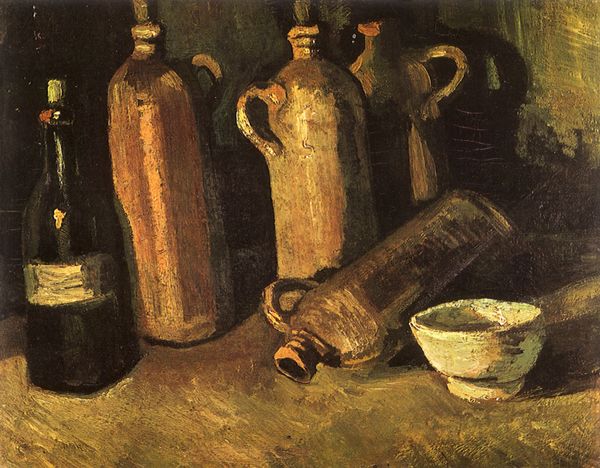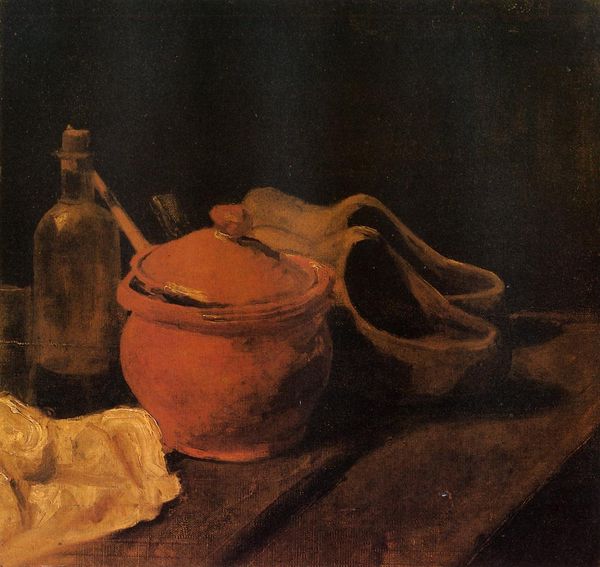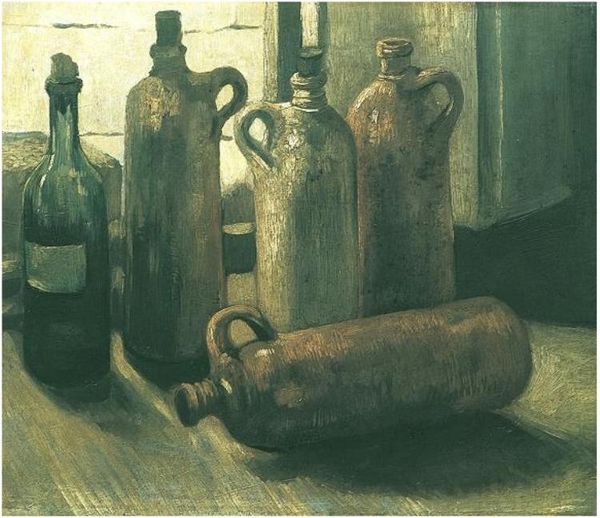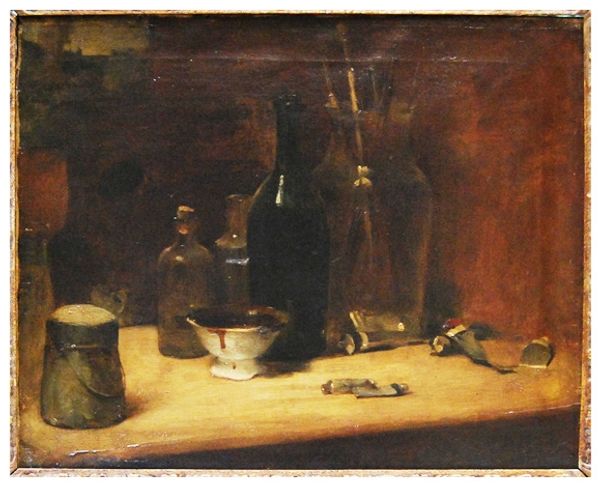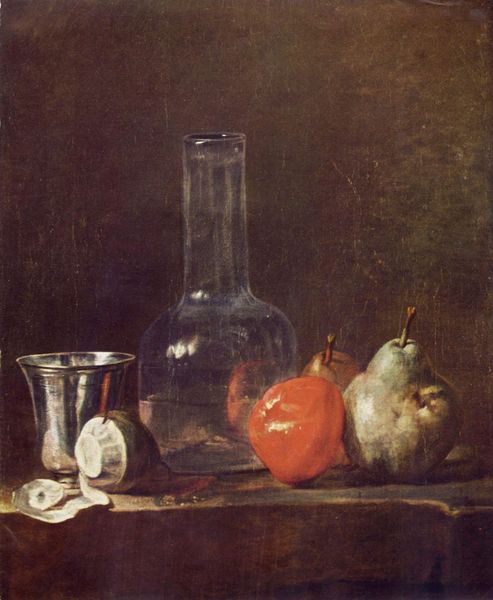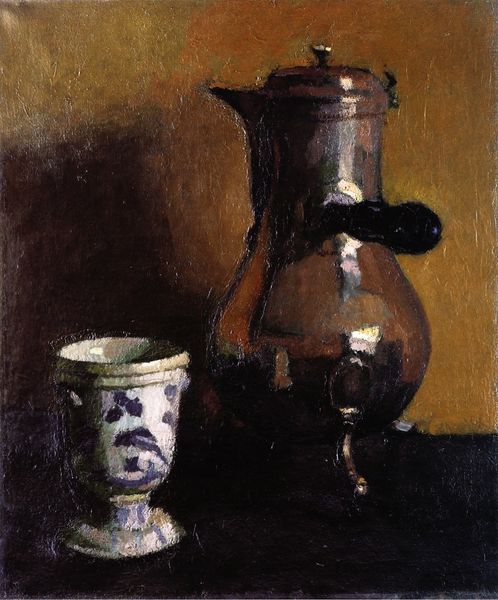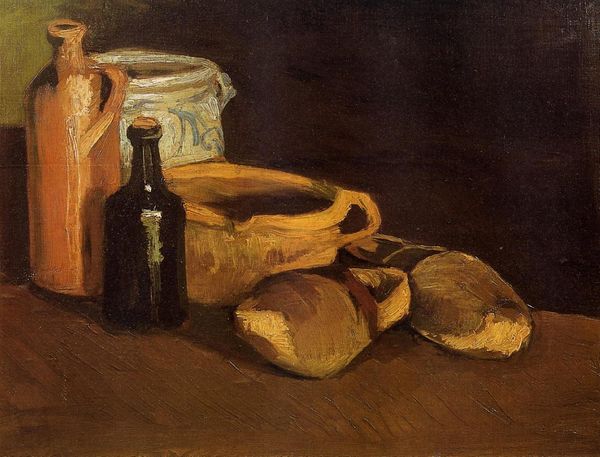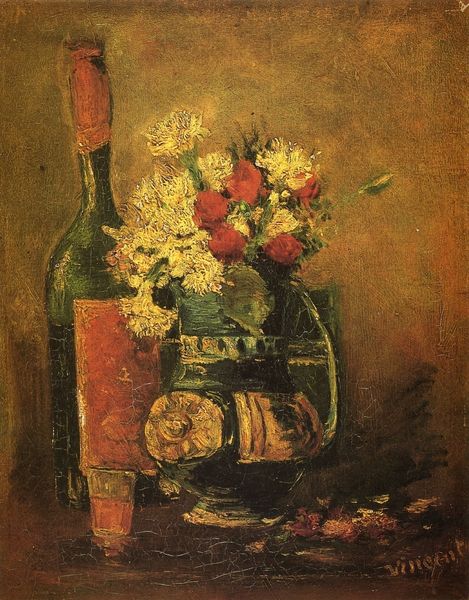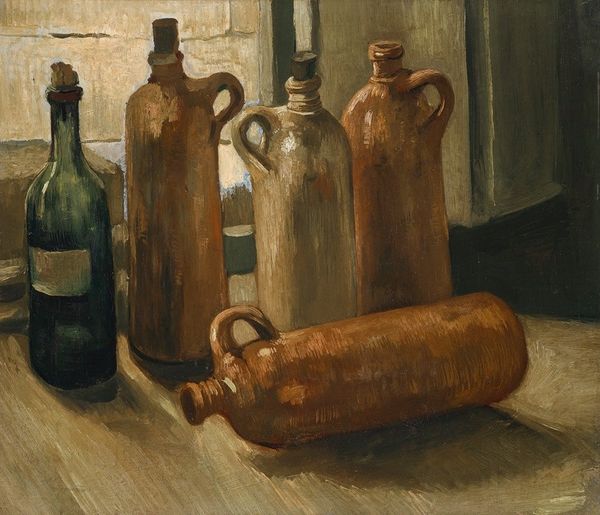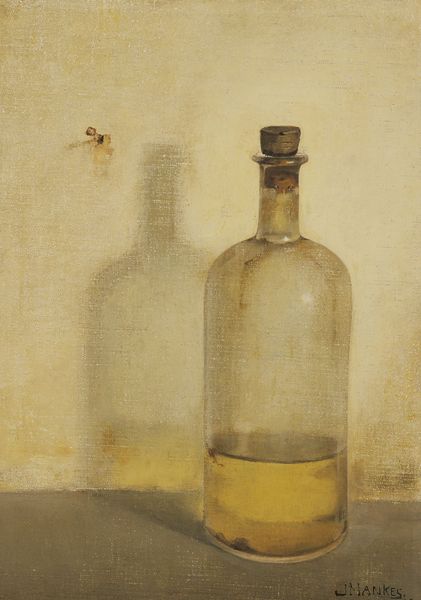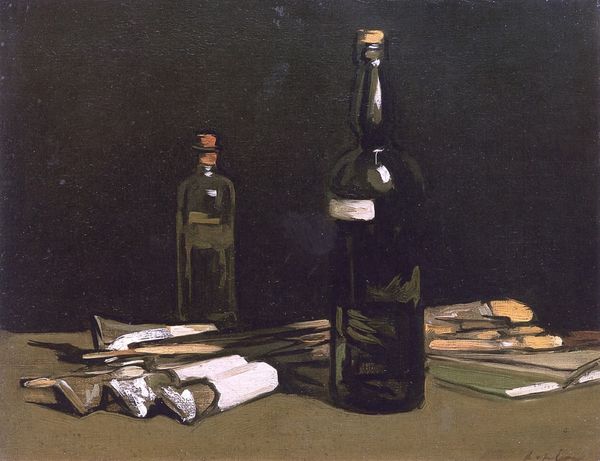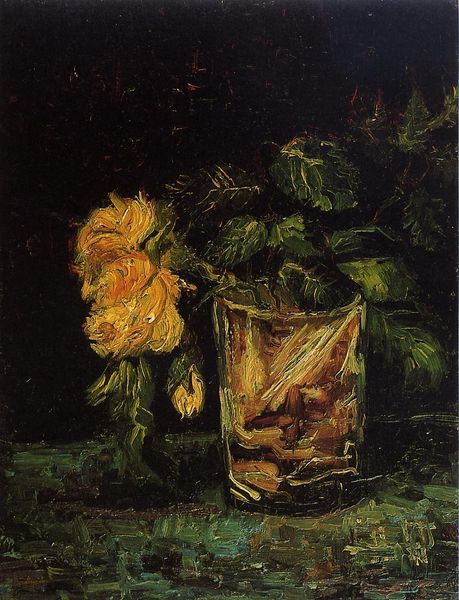
oil-paint, glass, impasto
#
still-life
#
oil-paint
#
glass
#
oil painting
#
impasto
#
post-impressionism
Copyright: Public domain
Curator: Good morning, welcome. We're looking at Van Gogh's "Still Life with Coffee Mill, Pipe Case and Jug," completed in 1884. The composition presents a cluster of mundane objects rendered in thick impasto. Editor: It's like stepping into a forgotten corner, isn't it? Moody browns and blacks...it has this intense, quiet quality. It reminds me of a Dutch interior painting—a life observed close-up and intensely. Curator: Yes, a study in contrasts and forms. Notice how the solidity of the jug plays against the angularity of the coffee mill. The brushstrokes themselves create texture and depth. It’s almost as if each object is asserting its own unique existence within the canvas. Editor: Precisely! It’s not just painting; it's tangible. I love how that stoneware jug has such volume; the coffee mill practically screams "grind me," while that pipe practically calls out "light me." Curator: Consider Van Gogh's employment of color. The restricted palette amplifies the tonal differences, bringing form to the objects, yes? Observe the way Van Gogh uses light to reveal form through highlighting objects against the dark background. Editor: True. It's a grounded palette. It’s less about beauty, I think, and more about... reality, as he perceived it. Almost humble—the coffee grinder worn, the pipe aged, but the experience it offered is fresh. It gives me a bittersweet taste of everyday life in that time. Curator: A fair reflection. The seemingly random juxtaposition presents a study in structure and function, where line, form, and hue come together in order and unity. These everyday objects, charged with personal history, reflect life experiences through material expression. Editor: You put that so well. So, standing here, considering the "Still Life"...I feel a quiet understanding, a shared breath across centuries. The painting embodies the silent stories we leave within the things we use. Curator: A compelling encapsulation. For me, "Still Life" reflects the artist's acute observational ability, using the still life genre to convey depth through color and structure.
Comments
No comments
Be the first to comment and join the conversation on the ultimate creative platform.
